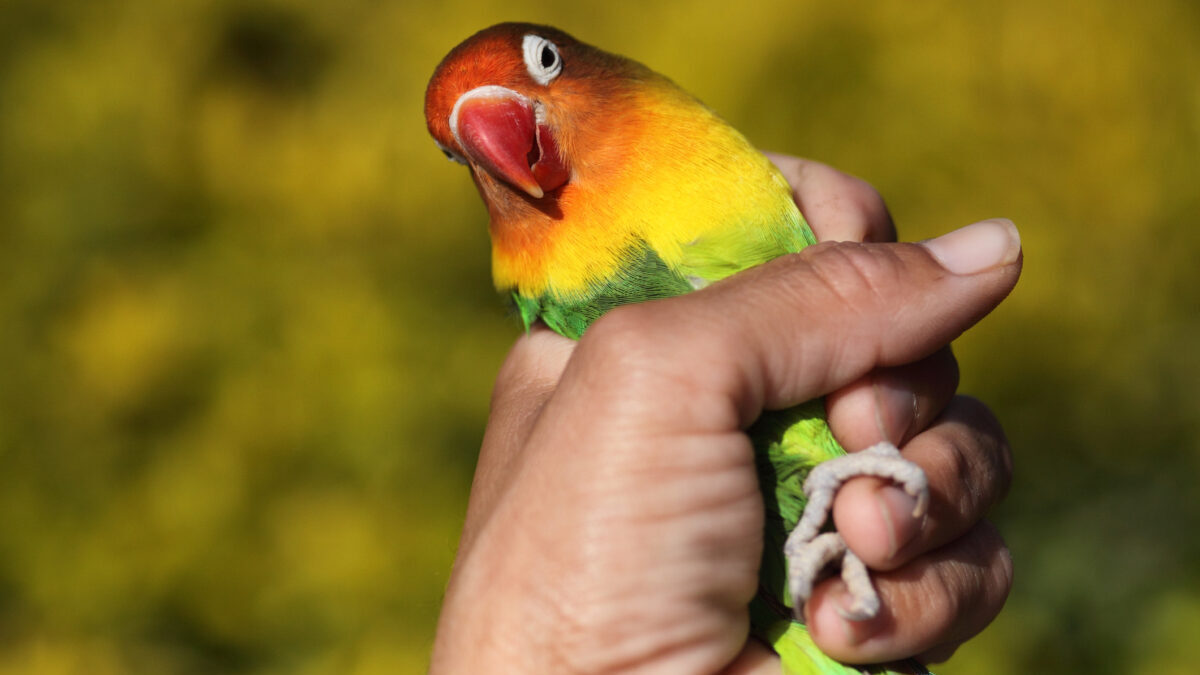Monsters of Rock: How much is a Bird in Hand worth in Adelaide?

Pic: Getty Images
- SA minister knocks back Terramin’s Bird in Hand gold mine amid protests from Adelaide Hills wineries
- Major job cuts at Fortescue: The Oz
- Rio subsidiary Energy Resources of Australia goes off in search of Ranger uranium clean up money
We’ve all heard the phrase a bird in the hand is worth two in the bush.
In the Adelaide Hills however, two birds is too many.
South Australia’s Minister for Energy and Mining Tom Koutsantonis, who just last month lauded the state’s decade high exploration spend of $38.4m in the September quarter, today vanquished the Bird in Hand gold mine proposed by ASX-listed tiddler Terramin (ASX:TZN), due to its potential impact on local wineries.
They include Petaluma and Bird in Hand, located adjacent to the site of an old 19th and 20th century gold mine that was developed underground before its closure in 1935.
Terramin, down 22.2% today after announcing its ‘surprise and disappointment’ at the government’s decision, owned the land freehold and had planned to use a “single keyhole” method to enter underground tunnels, extracting around 44,700oz of high grade gold and 20,600oz silver over a five year mine life.
It says it would have employed around 100 people in Woodside, near the site of the Adelaide Hills mine, and 40 at a repurposed zinc processing facility down the road at Strathalbyn.
The Department for Energy and Mining had advised its proposal satisfied relevant statutory obligations for the granting of a mining lease. But Koutsantonis in a media statement said he took broader state interests including the tourism industry and local community into account.
“I appreciate Terramin’s cooperation in providing further detail about their proposed operation as requested,” he said in a media statement.
“I’m also acutely aware of community concerns about the proposal, including from nearby wineries, residents and the local community.
“The area of the proposed mine is home to a world-class viticulture industry, producing some of Australia’s best-loved wines.
“Tourism to the region is a critical contributor to the local economy and, on balance, there remains a possibility this proposed short-term mine may adversely affect the established and significant long-term agricultural and tourism industries of the Woodside area immediately adjacent the project areas.
“As such, I am not willing to risk these established local industries against the opportunity this short-term mine may provide, and have decided it is in the state’s interest to decline the Mining Lease and Miscellaneous Purposes Licence applications by Terramin for its Bird in Hand Gold Project.”
Terramin (ASX:TZN) share price today:
Could it have wider implications?
The decision has drawn condemnation from the Association of Mining and Exploration Companies, whose CEO Warren Pearce says the State’s attractiveness as an investment destination will suffer.
South Australia pales in size to jurisdictions like WA and Queensland when it comes to its mining sector.
But it is Australia’s only uranium producing state, boasts one of its longest running high-grade iron ore businesses in GFG Alliance’s SIMEC Mining and is a major copper producer, home to BHP’s (ASX:BHP) Olympic Dam mine and the operations of its $9.6 billion takeover target OZ Minerals (ASX:OZL).
While a number of other mines and quarries are dotted around the Adelaide Hills area, Kousantonis’ statement said the circumstances were specific to the Bird in Hand project.
The project has been fought for years by a coalition of wineries, and the decision had the support of local State and Federal members Dan Cregan and Rebekha Sharkie. They say the proposed gold mine could have damaged the region’s “fragile water system”.
“We appreciate the clarity of direction from the State Government to endorse the pristine environment, the world class wine, food and the precious cultural significance of the beautiful Adelaide Hills,” Bird in Hand Winery founder Andrew Nugent said in a statement from the Inverbrackie Creek Catchment Group.
“I am grateful to have the opportunity, along with an amazing community of artisan wine professionals, to showcase our state to an elite, discerning and global culinary audience.
“This decision allows us to continue to promote Adelaide Hills produce on the world stage with surety.”
But Pearce said it would hurt investor confidence in a State looking to bolster its mining industry and become a major hydrogen producer.
“I try hard to explain to governments that it’s not about the scale and the size of the project, it literally comes down to a judgement the investment community is making about whether the community and particularly the South Australian Government will support development,” he said.
“In this case the South Australian Government’s trying really hard to attract major renewable investments, major hydrogen investments, all of which are much larger projects with much larger environmental impacts.
“When they can’t get over the line with a relatively small project with a very defined footprint, that will create questions in the minds of investors.
“Everyone’s competing for these opportunities … those who continue to change the rules or demonstrate risk and uncertainty are going to lose out.”
Job cuts rumoured at Fortescue and ERA goes back in search of funding for mine clean up
Fortescue Metals Group (ASX:FMG) boss and major shareholder Andrew Forrest could well have some ‘splaining to do on his company’s financial results call last week.
The company has painted the image of an unstoppable force in recent times, shipping record amounts of iron ore through its Pilbara iron ore operations in the first half of FY23 and on Monday saying it could begin mining ore in a US$200 million early development at its proposed Belinga mine in Gabon.
But things have been a little more chaotic under the hood, with Forrest repeatedly downplaying questions from media about executive churn at the company.
The Australian has now reported as many as 1000 jobs could be cut at Fortescue and its green energy arm Fortescue Future Industries.
Citing unnamed sources, The Oz said hundreds of jobs could be on the line at FFI and corporate head office, as well as at its Pilbara iron ore mines, although frontline safety and production staff would not be involved in the cost-cutting.
The iron ore price has surged since late October by 50% from under US$80/t to over US$120/t. FMG’s C1 cash costs fell 3% quarter on quarter in December to US$17.17/wmt, but that was 12% higher than the same period in 2021-22, when it produced at a rate of US$15.31/wmt.
Meanwhile, Energy Resources of Australia (ASX:ERA) shares fell after a new independent board committee including chair and former EY partner, Morrison Government minister Ken Wyatt and Stuart Glenn resumed discussions on its multi-billion dollar funding requirements to rehabilitate the Ranger uranium mine.
The old board was turfed out last year after a dispute with majority shareholder Rio Tinto, which castigated it for an independent expert’s report which suggested the Jabiluka uranium deposit in the Northern Territory could yet be developed.
Traditional Owners have said they would never support its development, and Rio has committed to restore the old Ranger mine to a state similar to the surrounding Kakadu National Park.
But the cost of the rehabilitation bill has continued to spiral since a feasibility study in 2019 placed a $973m estimate on the job, rising to between $1.6-2.2b in February last year.
“Work has progressed on funding solutions, including work on a possible interim entitlement offer with a target launch in March 2023,” ERA said.
“An update will be provided to the market in the coming weeks.
“ERA has engaged Highbury Partnership as financial adviser and Herbert Smith Freehills as legal adviser to the Independent Board Committee and Ashurst as legal adviser to the Company.”
Fortescue Metals Group (ASX:FMG) and Energy Resources of Australia share prices today:

UNLOCK INSIGHTS
Discover the untold stories of emerging ASX stocks.
Daily news and expert analysis, it's free to subscribe.
By proceeding, you confirm you understand that we handle personal information in accordance with our Privacy Policy.








